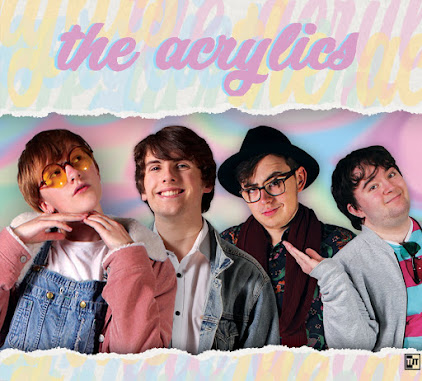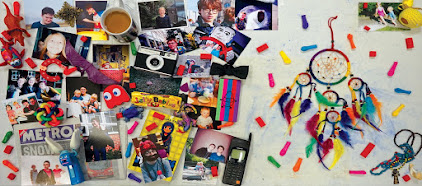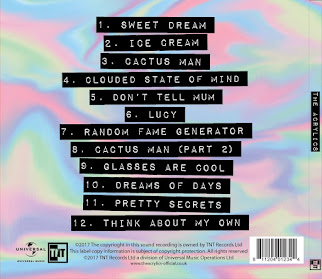From Task 1, the audition, I learnt some of the basics of a music video. I had to teach myself lip-syncing, and I edited in the style I was told to- no continuity, but lots of different angles and shot types and so on. I also had to perform physically, by doing movements and so on to go with what I was 'singing.' All of these things improved my understanding for the workshop shoot day, and doubtless will carry over into the main project.
My audition video, where I got the chance to effectively make a miniature music video and thus practice all the skills involved. This included filming, directing myself, performing, and later editing.
The rehearsals, Task 2, taught me a bit about the studio itself, as we got to see it being set up, and even had a practice in front of the camera while it was linked with the monitor. This of course helped on the shoot day, and will help in the future. However, the main benefit of the rehearsals was teaching us how to perform, and also, by observing Jasmine our 'acting coach,' how to direct as well. Seeing how she got different reactions out of us, as well as learning how to perform those reactions well, was useful to learn.
The focus of Task 3, organising costume, was a smaller part of the project, but an essential one. I learnt about the costume design and compiling process- making compromises and having as many options as possible are the golden rules when trying to use what you have to achieve the right look and thus persona for each character, and these rules will doubtless help in the main project.
The final task, Task 5, was the edit, and it was probably the most daunting task barring the shoot itself. We effectively threw all previously learnt rules out of the window, such as continuity and shot progression, and furthermore we had to follow the real video as closely as possible and ensure the lip-syncing looked right. Deconstructing and reconstructing the video was useful for seeing some of the conventions of music videos, such as jumping between scenes and close-ups on lip-syncing, and while in the main project we won't have to follow a video, it will all be original, spending time finding the perfect moment from a take and cutting it and otherwise editing it to be near perfect is definitely something to carry forward into the main project.
The focus of Task 3, organising costume, was a smaller part of the project, but an essential one. I learnt about the costume design and compiling process- making compromises and having as many options as possible are the golden rules when trying to use what you have to achieve the right look and thus persona for each character, and these rules will doubtless help in the main project.
The final task, Task 5, was the edit, and it was probably the most daunting task barring the shoot itself. We effectively threw all previously learnt rules out of the window, such as continuity and shot progression, and furthermore we had to follow the real video as closely as possible and ensure the lip-syncing looked right. Deconstructing and reconstructing the video was useful for seeing some of the conventions of music videos, such as jumping between scenes and close-ups on lip-syncing, and while in the main project we won't have to follow a video, it will all be original, spending time finding the perfect moment from a take and cutting it and otherwise editing it to be near perfect is definitely something to carry forward into the main project.
 |
| A picture of me while I am editing my and Sayo's version of the music video remake, in Premiere on one of the edit suites. Editing involved both placing shots correctly as well as grading. |






No comments:
Post a Comment